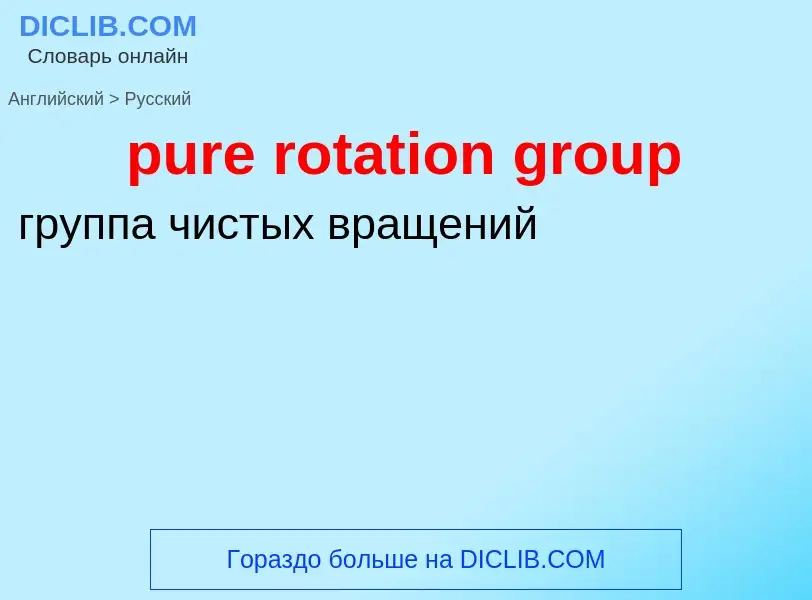Translation and analysis of words by artificial intelligence
On this page you can get a detailed analysis of a word or phrase, produced by the best artificial intelligence technology to date:
- how the word is used
- frequency of use
- it is used more often in oral or written speech
- word translation options
- usage examples (several phrases with translation)
- etymology
pure rotation group - translation to russian
[rəu'teiʃ(ə)n]
общая лексика
вращение
чередование
севооборот
ротация
смена (культур)
вихрь
вращательное движение
вращательный
кругооборот
кругообращение
периодическое повторение
поворачивание
поворот
ротор
собственное вращение
физиология
круговорот
строительное дело
угол поворота (сечений)
существительное
общая лексика
вращение
оборот
чередование
периодическое повторение
перемещение по кругу (кораблей в круговом ордере)
спорт
чередование игроков
военное дело
замена личного состава или частей
сельское хозяйство
севооборот
ротация
лесное дело
оборот рубки
гидрология
вихрь
Wikipedia
In automata theory, a permutation automaton, or pure-group automaton, is a deterministic finite automaton such that each input symbol permutes the set of states.
Formally, a deterministic finite automaton A may be defined by the tuple (Q, Σ, δ, q0, F), where Q is the set of states of the automaton, Σ is the set of input symbols, δ is the transition function that takes a state q and an input symbol x to a new state δ(q,x), q0 is the initial state of the automaton, and F is the set of accepting states (also: final states) of the automaton. A is a permutation automaton if and only if, for every two distinct states qi and qj in Q and every input symbol x in Σ, δ(qi,x) ≠ δ(qj,x).
A formal language is p-regular (also: a pure-group language) if it is accepted by a permutation automaton. For example, the set of strings of even length forms a p-regular language: it may be accepted by a permutation automaton with two states in which every transition replaces one state by the other.


![plane of orbit]] and [[axial tilt]] (for Earth). plane of orbit]] and [[axial tilt]] (for Earth).](https://commons.wikimedia.org/wiki/Special:FilePath/AxialTiltObliquity.png?width=200)



